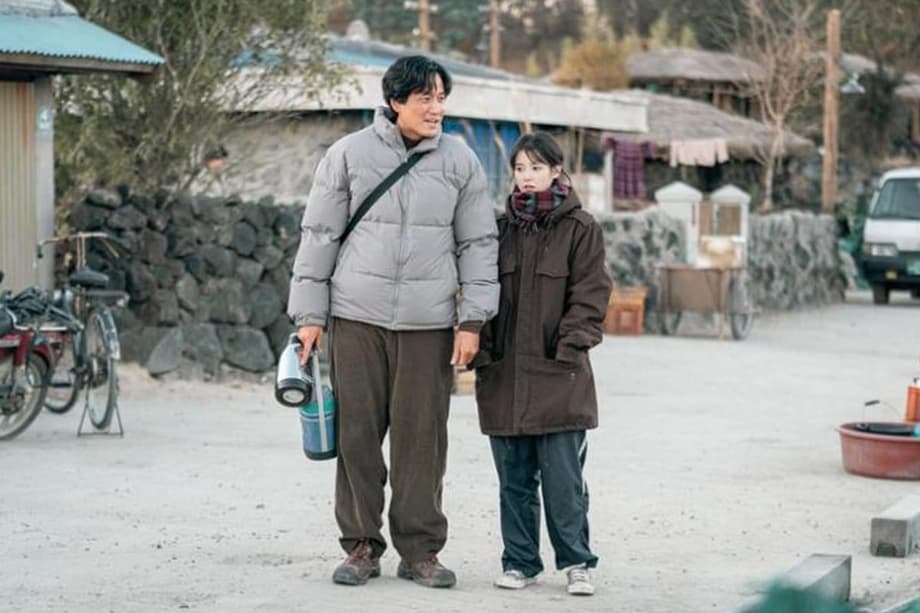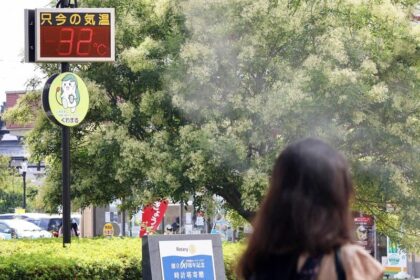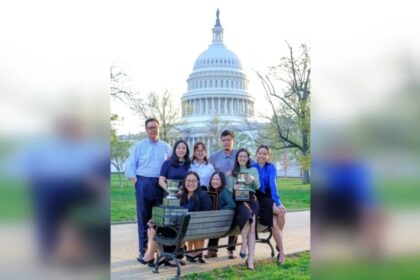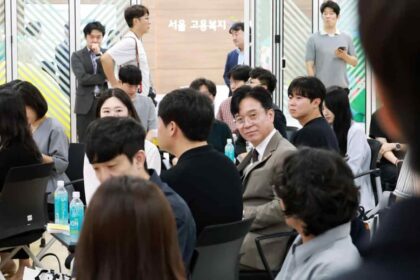Why the past on screen feels safe right now
A growing number of young people in South Korea are finding comfort in television stories set long before they were born. Period K dramas are turning handwritten notes, cassette players, pagers, and paper bus tickets into emotional touchstones for Gen Z viewers who grew up on smartphones. These series look back to the 1970s through the 1990s, a time of social change shaped by rapid growth, political struggle, and neighborhood life. Recent hits such as JTBCs Reborn Rich and Netflixs When Life Gives You Tangerines have captured attention at home and abroad, with the latter earning major honors at the Baeksang Arts Awards. The appeal is more than a vintage filter. Viewers say these shows offer warmth and a sense of community that can feel scarce in a hyperconnected age. They show families sharing crowded dinner tables, friends gathering in narrow alleyways, and coworkers navigating hard times together. The settings are familiar from history class and grandparents stories, yet the narration brings them close. For young Koreans dealing with housing costs, job market pressure, and the weight of expectations, the past can feel simpler, slower, and kinder.
- Why the past on screen feels safe right now
- What is newtro and why it matters
- The shows driving the nostalgia boom
- How streaming and global fandom fuel the trend
- Retro style travels into fashion and beauty
- Food, fandom and cross cultural bridges
- The craft behind period worlds
- A clear eyed view of history, not rose tinted
- At a Glance
That longing helps explain why a pre digital aesthetic has become a cultural force. On screen, the rush of notifications fades, replaced by a face to face confession on a city bus or a secret passed on a pager. Dramas set during the Asian financial crisis or under authoritarian limits do not hide hardship, yet they often highlight grit, sacrifice, and small joys. Viewers say the result is a safe place to process current anxieties. The tone often leans toward healing and reflection. Characters rely on neighbors and extended families as much as on technology. The familiar rhythm of school, work, and market days becomes a narrative anchor. For many, that is a welcome change of pace.
Studios and platforms have noticed. Streaming services are commissioning more stories that span decades, while cable networks refine production design to capture specific moments in Korean life. The nostalgia wave is not a short trend. It taps into identity, memory, and the desire for community. It also travels across borders, since these themes are universal. In the process, period K dramas have become a doorway for global audiences to explore Korean history through everyday life.
What is newtro and why it matters
In South Korea the broad term newtro describes a modern embrace of retro culture. It is not a museum replay. It is the practice of taking older music, fashion, interiors, and slang, then adapting them for today. You can hear it in the reappearance of classic trot melodies or see it in cafes that echo 1970s design. You can spot it in music videos and runway looks that bring back past decades with fresh color and styling. On television, newtro shows up in careful set dressing and the structure of family and workplace stories. It feels nostalgic, yet it is clearly made for a contemporary audience.
Choi Ji hye, an analyst at the Consumer Trend Research Institute at Seoul National University, describes the trend as a creative remix of the past that speaks to younger generations who did not live through those years.
“Part of its definition is reinterpreting elements from the past to create something new.”
Economic uncertainty and climate worries have also shaped this taste for familiar aesthetics. Many young consumers say they are seeking pieces that last longer and have a story. That interest spans secondhand shopping, older music genres, and the resurgence of classic snacks and brands. On screen, it signals a desire for shows that celebrate family ties, neighborhood life, and friendship while acknowledging real historical struggle.
An antidote to screen fatigue
For Gen Z, daily life often plays out online. Study groups, part time jobs, and social plans are coordinated through apps. That constant connection can be exhausting. Period dramas offer a break. They invite viewers into analog routines with clearer boundaries. You wait by a landline, not for a message that can arrive at any hour. You look up a friend at the corner shop instead of scrolling through social feeds. The effect feels grounded. It also allows stories to breathe, since characters cannot solve everything with a tap on a screen.
The shows driving the nostalgia boom
Many viewers trace the rise of retro K dramas to the Reply trilogy, a collection of smash hits set in 1988, 1994, and 1997. Each season built a neighborhood around its characters and threaded real events through family life, from baseball pennants to college exams. The music, fashion, and language brought forward the textures of the time. Parents and young adults watched together, often comparing how things felt then and now.
Reborn Rich introduced a different lens, mixing time travel with corporate history. Set across decades and anchored in a chaebol family, it wove political shifts and market swings into its plotting. The show toggled between high stakes inheritance battles and period snapshots of city streets, home interiors, and office floors. Viewers who did not live through the 1980s or 1990s got a guided tour of the ambitions that shaped modern Seoul.
When Life Gives You Tangerines, a sweeping tale that moves across decades and begins in island communities, pairs big historical moments with quiet scenes of daily life. It found a large audience, then collected major trophies at the Baeksang Arts Awards. The series uses small objects as emotional anchors, from school notebooks to radio shows, and treats regional identity with care.
Recent productions have grown even more meticulous. The tvN drama Typhoon Family recreates the late 1990s in vivid detail. The tension of the 1997 financial crisis lives in boardroom debates and household budgets. The camera lingers on pagers, city phones, cassette tapes, abacuses, and variety shows that defined the era. Viewers see the Orange Tribe of Gangnam, a symbol of 1990s nightlife, and the dating program Love Studio that shaped popular conversation.
Another series, A Hundred Memories, circles back to the early 1980s to tell a story about friendship, work, and first love. Two young bus conductors on the iconic 100 line navigate long shifts and changing expectations. The show highlights a job that has disappeared from the streets of today, and rebuilds vintage buses to show how city life moved then. The narrative is gentle, yet it carries a quiet power as the two women search for independence and connection.
Aema explores 1980s film culture in the Chungmuro district, the heart of Korean cinema at the time. It follows a top star and a newcomer as they confront industry rivalries during the making of Madame Aema. Fashion, makeup, and set design place viewers in the world of rehearsals and marquee premieres. These details make the era feel lived in, not abstract.
How streaming and global fandom fuel the trend
Streaming platforms have turned period K dramas into a global habit. Many shows arrive with subtitles in dozens of languages. Release schedules are tighter and more predictable, which makes it easier for fans on different continents to watch together. A series that carefully rebuilds 1980s Seoul now premieres in the Americas, Europe, and Southeast Asia on the same day it airs in Korea. That kind of access rewards productions that invest in world building. If sets and costumes look convincing on a big television in Mumbai or Madrid, the audience will stay.
- Streaming access expands discovery. Apps recommend period dramas to viewers who started with comedy or romance, and subtitles remove barriers.
- Story structure keeps audiences engaged. Clear arcs, character growth, and cliffhangers encourage binge watching.
- Fandom culture spreads the word. Edits on short video platforms and group chats guide audiences toward retro titles that match their taste.
Viewership spans ages. Many watchers are in their late teens and twenties, yet a sizable share includes people in their thirties and beyond, often watching with family members. Conversations about episodes do not stop when credits roll. They spill into social feeds, where playlists, style guides, and food recommendations keep the buzz alive. Industry surveys in recent years have also pointed to steady export growth for Korean scripted content. Revenues from international sales are now measured in the hundreds of millions of dollars, and investment in K content is expected to rise through the decade.
Retro style travels into fashion and beauty
The taste for earlier decades reshaped wardrobes and bathroom shelves. Costumes in period dramas spotlight straight lines, midrise denim, soft knits, and classic sneakers. Fans remix those looks with today’s silhouettes. The newtro mood turned up in fashion districts like Hongdae and Euljiro, in music videos, and in the styling of stars who prefer understated chains and muted palettes. Costume designer Susanna Song described how family images shaped her eye for retro aesthetics. She recalled a vivid memory when she explained how the past can guide a modern look.
“My mom had this boat neck top with polka dots that always stuck out to me,” she said. “She was always so sophisticated and classy.”
South Korea’s vintage market long relied on secondhand clothing imported from the United States. Hollywood movies and the presence of U.S. forces after the Korean War influenced local taste, while many Korean brands did not reach wide recognition until the early 1980s. That history is changing as younger shoppers search for older domestic labels and archive pieces. Vintage shop owner Myoung Jung woo said the trend builds bridges across generations.
“It also helps you bond with your elders,” she said.
Beauty followed a similar track. Korean skincare and color cosmetics have grown across Asia and beyond, helped by the looks and routines shown in popular dramas. In Japan, imports of Korean beauty products more than doubled in 2024 compared with the year before. Across Asia, millions of social posts discuss K drama, K pop, and K beauty trends, most often among people ages 19 to 24. The shift from anti aging to slow aging routines has gained ground, matching the gentler aesthetics shown on screen. Viewers try the lip tints, glowy bases, and soft blush tones they see on their favorite actors, then share results online.
Food, fandom and cross cultural bridges
Television can change what we order for dinner. In India, interest in Korean cuisine has surged among Millennials and Gen Z. Delivery data show strong year on year growth in orders of Korean dishes, including ramen, fried chicken, and buns. Large metro areas lead in volume, but emerging cities have posted some of the fastest gains. Younger diners are shaping the menu, with people in their teens and twenties driving a significant share of orders. Korean flavors now appear on fast casual menus and in drinks like yuzu based sodas. Restaurants in cities from Delhi to Bengaluru offer floor seating and low tables that echo Korean dining customs shown on screen.
Creators have also taken the lead. Influencers like Pooh in Korea, Indian Unnie, and bilingual hosts who hop between Hindi and Korean produce reaction videos, food tastings, and everyday vlogs about life in Seoul. Their clips get millions of views and make Korean culture feel close to home. Many families in India, Southeast Asia, and Latin America now watch period K dramas together, then search for dishes from the episodes or hunt for soundtrack playlists. This cycle keeps the culture moving across borders.
The craft behind period worlds
Getting the past right requires more than props. Art teams tour antique markets and storage basements to find radios, utensils, school uniforms, and calendars that match a specific year. Production designers study old photos and interview people who lived through the period to confirm bus routes, street sign fonts, or office gear. Costume teams reference fabric weights and cuts so that jackets drape as they did on older patterns. Makeup artists tone down contemporary contouring and match period shades.
Directors and cinematographers support the mood with light and sound. Warmer color grades signal incandescent bulbs. Slightly softer lenses and subtle film grain echo the feel of older cameras. Sound editors mix in street vendors and bicycle bells to recreate the city a generation ago. Writers choose small details with care, from coin phone calls to the way neighbors share side dishes across fences. These choices let viewers imagine what a day felt like, not just what it looked like.
A clear eyed view of history, not rose tinted
Period K dramas embrace tenderness, but they do not ignore pain. Many scripts address pro democracy protests, labor struggles, censorship, and the stress of the 1997 crisis that upended jobs and family businesses. Parents take on second shifts, college graduates face long job hunts, and characters argue about fairness during hard times. The best shows treat those events as part of everyday life rather than a history lesson. Nostalgia becomes a tool to talk about how people endure change, protect one another, and plan for a better future.
At a Glance
- Gen Z viewers in South Korea are turning to period K dramas set in the 1970s to 1990s for warmth, clarity, and community.
- Recent series such as Reborn Rich and When Life Gives You Tangerines pair intimate stories with historical settings and have won major awards.
- Newtro culture, which reinterprets older styles for today, has spread across fashion, cafes, music, and screen storytelling.
- Streaming access, strong story structure, and active fandoms are driving global growth in period K dramas.
- Fashion and beauty trends mirror on screen looks, with Korean beauty sales surging in parts of Asia and younger shoppers embracing vintage style.
- K dramas are boosting interest in Korean food abroad, with delivery data in India showing fast growth in orders of ramen, fried chicken, and other dishes.
- Production teams invest heavily in research, props, and design to make past decades feel real and emotionally rich.
- Many shows balance nostalgia with honesty about protest, economic disruption, and the costs families carried in earlier decades.












